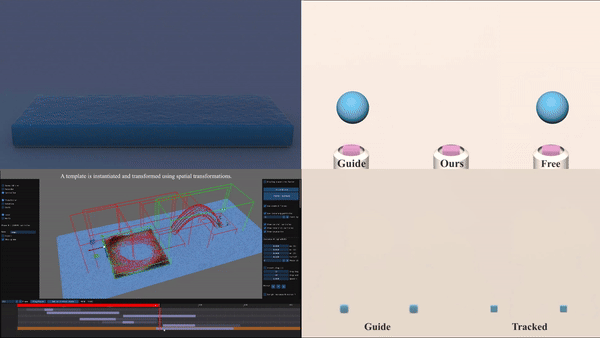
Abstract
Physics-based animation can generate dynamic systems of very complex and realistic behaviors. Unfortunately, controlling them is a daunting task. In particular, fluid simulation brings up particularly difficult problems to the control process. Although many methods and tools have been developed to convincingly simulate and render fluids, too few methods provide efficient and intuitive control over a simulation. Since control often comes with extra computations on top of the simulation cost, art-directing a high-resolution simulation leads to long iterations of the creative process. In order to shorten this process, editing could be performed on a faster, low-resolution model. Therefore, we can consider that the process of generating an art-directed fluid could be split into two stages: a control stage during which an artist modifies the behavior of a low-resolution simulation, and an upresolution stage during which a final high-resolution version of this simulation is driven. This thesis presents two projects, each one improving on the state of the art related to each of these two stages. First, we introduce a new particle-based liquid control system. Using this system, an artist selects patches of precomputed liquid animations from a database, and places them in a simulation to modify its behavior. At each simulation time step, our system uses these entities to control the simulation in order to reproduce the artist’s vision. An intuitive graphical user interface inspired by video editing tools has been developed, allowing a nontechnical user to simply edit a liquid animation. Second, a tracking solution for smoke upresolution is described. We propose to add an extra tracking step after the projection of a classical Eulerian smoke simulation. During this step, we solve for a divergence-free velocity perturbation field resulting in a better matching of the low-frequency density distribution between the low-resolution guide and the high-resolution simulation. The resulting smoke animation faithfully reproduces the coarse aspect of the low-resolution input, while being enhanced with simulated small-scale details.
For scholarly quick dissemination, a preprint version of the paper is provided locally, even though we recommend to access the material through the official forums.